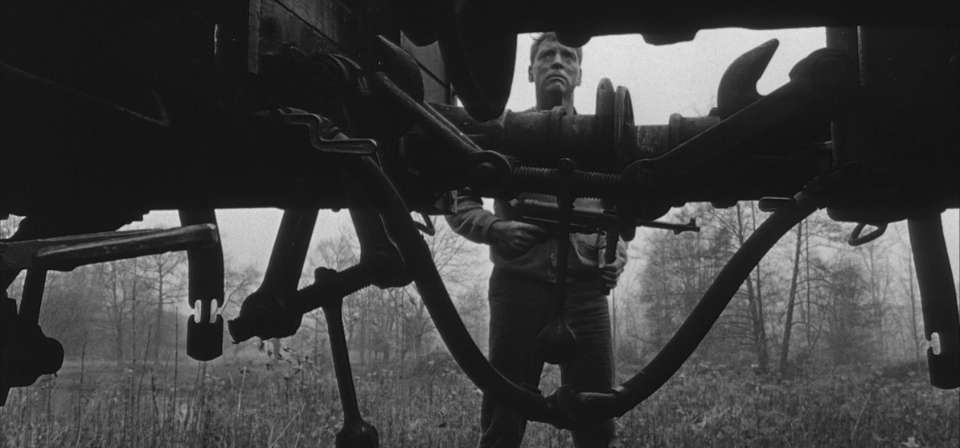The Train (1964)
How do you weigh the cultural heritage of a nation against the value of human life? That’s the subtext of The Train, a wholly persuasive, intelligent thriller crisply directed by John Frankenheimer (The Manchurian Candidate) with documentary-like realism and emphasis on action and problem-solving.
Caveat Spectator
Wartime violence.The setting is 1944 France, in the last days before the Nazi withdrawal. Paul Scofield (A Man for All Seasons) plays a cultured Nazi colonel whose appreciation for the priceless art of the Jeu de Paume museum in Paris has led him to protect the museum from damage or plundering during the occupation, but now with his departure imminent causes him to plunder the museum himself and bring the collection by train to Berlin as a consolation prize.
Pitted against him is Burt Lancaster as a railway man named Paul Labiche with resistance ties, who must try to stop the train from leaving the country until the Allies arrive. Their battle of wits, based on a true story, drives the central action of The Train. Labiche and other resisters try a number of stratagems to impede the train’s progress, the most audacious of which is based on the way that the the real train was actually delayed (though additional complications have been invented for the film).
The Train’s meticulous authenticity is enhanced by its exclusive use of French shooting locations and real trains rather than miniatures or models. Shot mostly in English, the film is mostly populated by French actors using with French or German accents as required, with the English Scofield, excellent as always, giving a creditable German accent and the American Lancaster making no attempt at a French accent. (Lancaster was dubbed in another film in which he played a European, the Italian-language The Leopard. He’s a fine actor and very solid in his role here, but it’s a bit odd to think that he’s supposed to be French.)
By putting the art into marked crates with the masters’ names — Manet, Cezanne, van Gogh — stencilled on the outside, the film takes the actual aesthetic impact of the paintings out of the equation, leaving the viewer as blind to the visual power of the masterworks as is the prosaic Labiche. The value of the unseen art is reduced to an idea — as are the lives of a number of resistance operatives who die offscreen for their efforts. Is it worth the price? Is there any answering that question?
Related

The Train: When is art worth dying for?
Are manmade things ever worth dying for? How do you weigh the value of art or artifacts against the value of human life? On the one hand, human life is sacred; things are just things. On the other, the cultural heritage of a people is an irreplaceable treasure that belongs not only to the whole community, but to all future generations.
Recent
- Benoit Blanc goes to church: Mysteries and faith in Wake Up Dead Man
- Are there too many Jesus movies?
- Antidote to the digital revolution: Carlo Acutis: Roadmap to Reality
- “Not I, But God”: Interview with Carlo Acutis: Roadmap to Reality director Tim Moriarty
- Gunn’s Superman is silly and sincere, and that’s good. It could be smarter.
Home Video
Copyright © 2000– Steven D. Greydanus. All rights reserved.